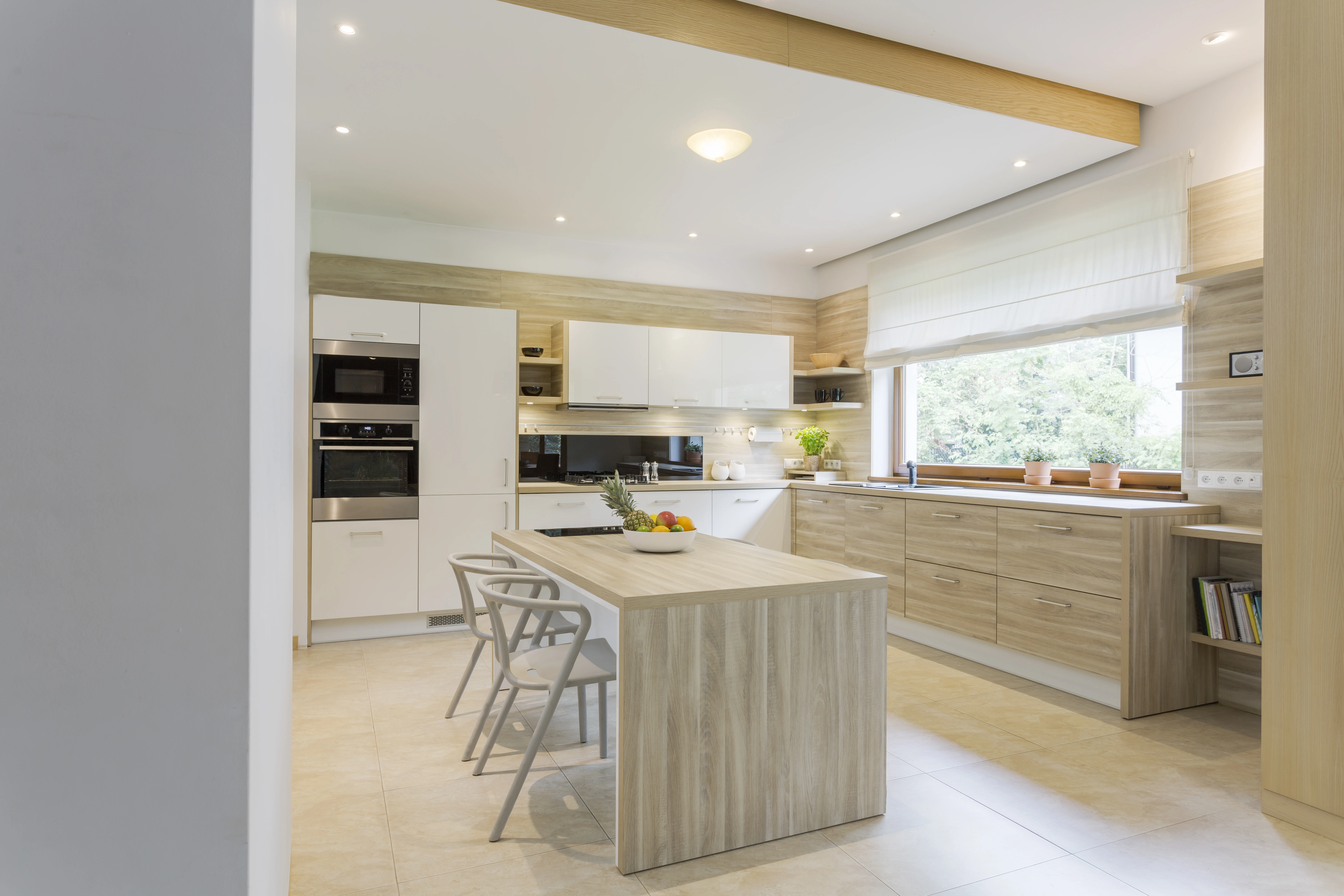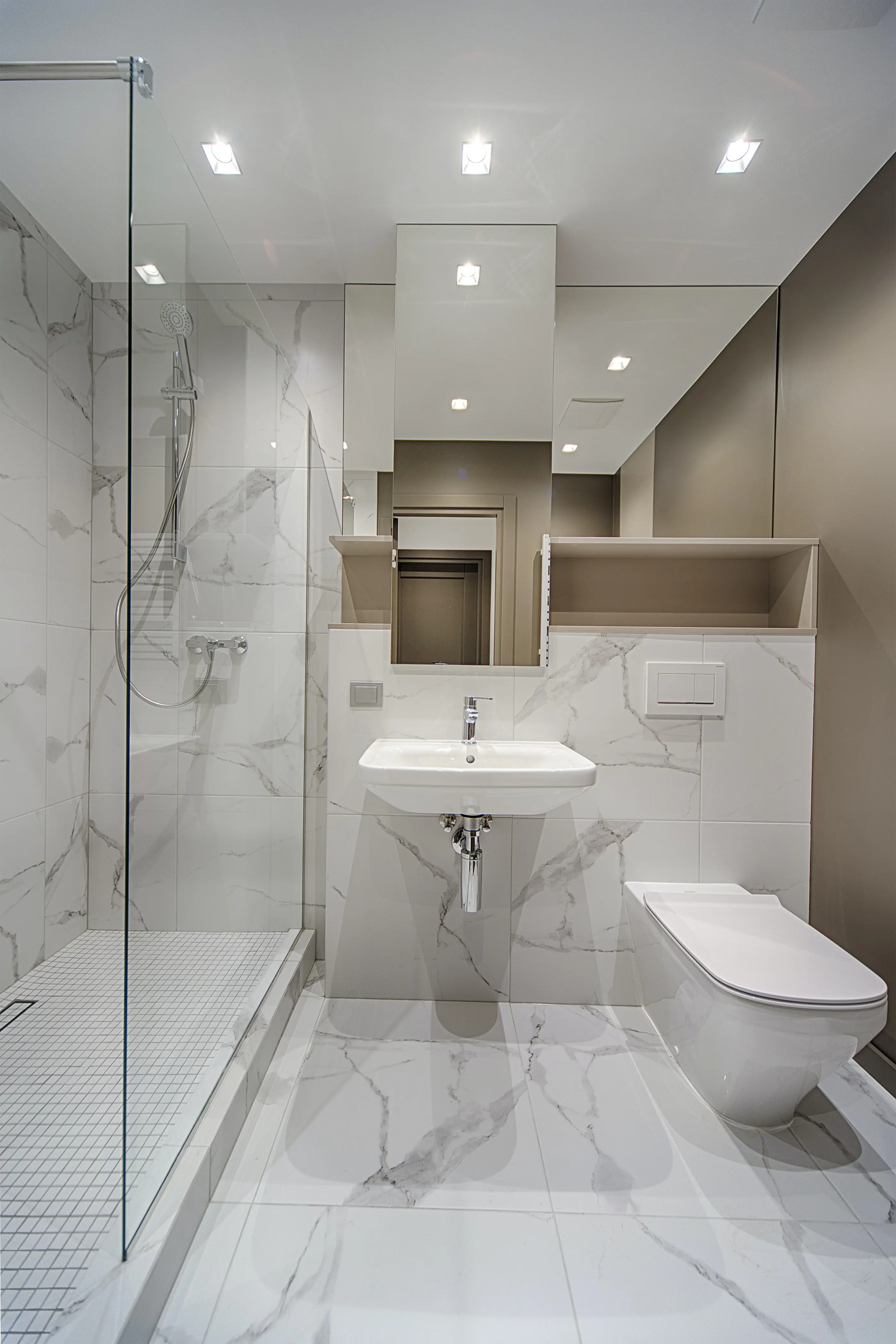Here are buildiro.com we receive a lot of questions about which light bulbs to use and how many are needed to properly light a room, particularly when it comes to downlights/spotlights.
The answer can be surprisingly complex and will depend on the type of bulbs you choose to use and the usage of the room you are trying to illuminate. We’ve gathered together some of your questions to try and cover as many as possible in this one short article.
How is light measured?
For most of your life, you’ve probably checked out the wattage of a light bulb when deciding which one to use to replace your existing bulbs. But as energy-efficient bulbs have proliferated across the market, and the wattages have stopped being a reliable way to gauge the output of bulbs, the focus has moved to lumens and lux as measurements.

Lumens v Lux – What is the difference?
Lumens measure the total amount of light output from a bulb, whereas lux measures the intensity of light on a particular surface. A lumen can be thought of as how much light is emitted from a bulb, whereas lux measures how brightly that light will appear when it hits an object. For example, a 1000 Lumen light source will illuminate 1 square meter with 1000 Lux or 10 square meters with only 100 Lux. This means we would get a different measurement of lux on a sideboard, for example, for the same light bulb, based on the distance of the bulb from the surface. If this sounds complicated, this should simplify it – a lightbulb in the ceiling will light up a sideboard brighter than the floor because the floor is further away.
Here is a handy conversion table to help you understand the typical lumens you can expect from bulbs of a specific wattage.
| Brightness in Lumens | 200+ | 400+ | 700+ | 900+ | 1300+ |
| Traditional Bulb | 25W | 40W | 60W | 75W | 100W |
| Halogen Bulb | 18W | 28W | 42W | 53W | 70W |
| CFL Bulb | 6W | 9W | 12W | 15W | 20W |
| LED Bulb | 4W | 6W | 10W | 13W | 18W |
How many lumens do I need for a spotlight?
The necessary lumens of each bulb will depend on its usage. For example, a bulb installed just a few feet above a counter as a task light is intended to highlight an area to allow for easier and safer work, but because it is closer to the counter than your ceiling lights, the bulb itself would not need to exceed the lights installed for ambience.
However, if you were attempting to use ceiling lights directly above a counter to create the highlight effect, those bulbs would require higher lumens than those used to create a general light level in the room.
Because of this complexity, we talk about the measurement of lux on the surfaces to be illuminated, as we will do in the following examples.
How many ceiling spotlights do I need?
So, as we stated above, the usage of a room will alter the number of spotlights you need. It’s important to factor in how often the space is used and for what purposes. Also, personal preferences will affect how brightly you like your room lit.
For regular rooms, where ambience wins over task lighting, such as the bedroom or living room spaces, a lux level of 150 at floor level is often recommended. This can be achieved with as few as 2-5 bulbs in smaller rooms, placed around the room at strategic positions. However, bear in mind that while fewer, brighter light bulbs might provide sufficient illumination, spreading the load between more bulbs at a lower lumens value will give a more even lighting result.
| 2m | 3m | 4m | 5m | 6m | |
| 2m | 2 | 3 | 4 | 4 | 5 |
| 3m | 3 | 4 | 6 | 6 | 8 |
| 4m | 4 | 6 | 6 | 8 | 9 |
| 5m | 4 | 6 | 8 | 9 | 10 |
| 6m | 5 | 8 | 9 | 10 | 12 |
The estimated number of bulbs on each table in this article is based on using 8W LED spotlights with a 2.4m ceiling. Each bulb would emit approximately 500 lumens.
How many spotlights do I need in my kitchen?
Needless to say, kitchens typically need a brighter light level to ensure that we can safely work with sharp implements and do complicated kitchen tasks.
For areas where task lighting is more important, such as kitchens or bathrooms, a lux level of 300-500 is advised at counter-top height. This will require more spotlights, but the difference in light quality will be significant.
Under-cabinet lighting can also supplement the light in a kitchen, particularly if there are no windows in the room. This is a great way to add task lighting without installing extra spotlights in the ceiling.
If we assume all lighting comes from the ceiling and you require even lighting across the room, you can use the following table to gauge how many bulbs you need.
| 2m | 3m | 4m | 5m | 6m | |
| 2m | 3 | 4 | 5 | 6 | 7 |
| 3m | 3 | 8 | 8 | 10 | 12 |
| 4m | 5 | 8 | 12 | 15 | 18 |
| 5m | 6 | 10 | 15 | 16 | 20 |
| 6m | 7 | 12 | 18 | 20 | 25 |
How many spotlights do I need in my bathroom?
Bathrooms are an interesting mix of wanting task lighting and also a gentler ambience. As such, we recommend a 200 lux measurement at floor level.
If anyone in the house likes to use the bathroom mirror for doing their make-up, you might require additional lighting above or around the mirror, but otherwise, even lighting across the room will provide flattering light without exposing every flaw.

| 2m | 3m | 4m | 5m | 6m | |
| 2m | 3 | 4 | 6 | 6 | 8 |
| 3m | 4 | 6 | 8 | 9 | 10 |
| 4m | 6 | 8 | 9 | 12 | 12 |
| 5m | 6 | 9 | 12 | 12 | 15 |
| 6m | 8 | 10 | 12 | 15 | 20 |
How many lumens do I need for a spotlight?
If you’re happy using 8W LED downlights (Roughly equivalent to traditional 40-60W lightbulbs), you can use our tables above as a guide for how many lightbulbs you need.
However, if you have something else in mind, here is how you can calculate the lumens needed for a room.
1. Measure the room’s square footage. Multiple Length x Width to get square footage.
2. Identify your room usage (below) to get the necessary “footcandle” measurement.
- Living room or bedroom – 10 to 20
- Kitchen or Dining room (Ambient) – 30 to 40
- Kitchen (Task lighting) – 70 to 80
- Hallway – 5 to 10
- Bathroom – 60 to 80
3. Multiple the room’s square footage by the footcandle suggestion. For example, a 4-metre x 3-metre (130 square-foot) living room, lit to the brighter end of our suggestion,* at 20 footcandles, would need 2600 lumens to light it sufficiently.
4. Work out how many bulbs you need. If we continue using our 8W / 500 lumen LED downlighters, it would require 6 bulbs to light the room. Or you could opt for brighter bulbs, perhaps 10W / 700 Lumen bulbs, requiring only 4 downlights.
Conclusion
At first glance, it can appear complicated to understand how many spotlights you need. However, following the simple steps above, you can easily calculate how to light your room sufficiently without going overboard or underlighting the room. So next time you’re wondering, “How many downlights do I need?” come back to this article and see how to work it out.
Leave a Reply